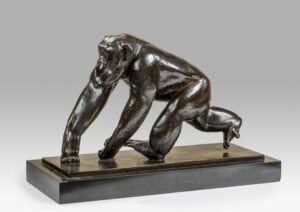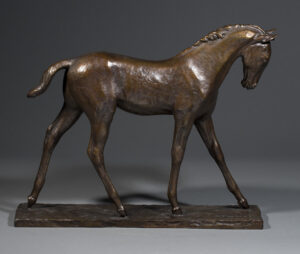Auguste Nicolas TRÉMONT
(1892-1980)
Born in a family of five children to a tailor, whom he lost very young, and to a mother who became a shoemaker, Auguste Trémont showed at an early age a true talent and aptitude for drawing. Encouraged by his teachers and, as many other Luxembourger artists, he left his native country in 1909 to pursue his art training in Paris and improve his drawing and painting techniques. He first enrolled at the Ecole Nationale Supérieure des Arts Décoratifs, where he entered the decoration workshop led by Eugène Morand who was also the head teacher of the school. He graduated one of the first of his class in 1912.
He was then admitted to the Ecole des Beaux-Arts in Gabriel Ferrier’s workshop. Back in Luxembourg for the summer holidays, he was retained there by the war and did not return to Paris before 1919. He reenrolled at the Ecole des Beaux-Arts but soon gave it up to spend some time everyday at the Jardin des Plantes. There he made the acquaintance of Paul Jouve and under his influence, started to draw and paint big cats. Then from 1924, he grew an interest in animal sculpture and from then on displayed his artworks in Luxembourg (Salon du Cercle Artistique, Salon de la Sécession…) as well as in Paris (Salon de la Société Nationale des Beaux-Arts, Salon des Tuileries, Salon d’Automne…). He was soon involved with the group of animal painters he got to know at the Jardin des Plantes, exhibited together with them from the 1920’s, and at the same time continuing to frequent his fellow countrymen. His workshop, located in the 5th arrondissement, became the meeting place of the future Luxembourger elite and many public and private orders were then set in motion. In Luxembourg he thus created the two lions flanking the stairs of the town hall’s façade, the sculptures of the cathedral’s lateral portal, the bas-reliefs of the two ambones as well as the two big lions at the entrance of the crypt. Trémont was also in charge of creating the sculptures for the Grand-Duché’s Pavilion on the occasion of the International Exhibitions of Bruxelles in 1935, Paris in 1937 and New-York in 1939. He received many public and private commissions from the bourgeoisie, hence becoming the most famous sculptor in his native country.
Many artworks of the artist are held at the Musée National d’Histoire et d’Art du Luxembourg.


